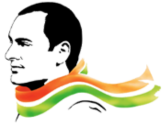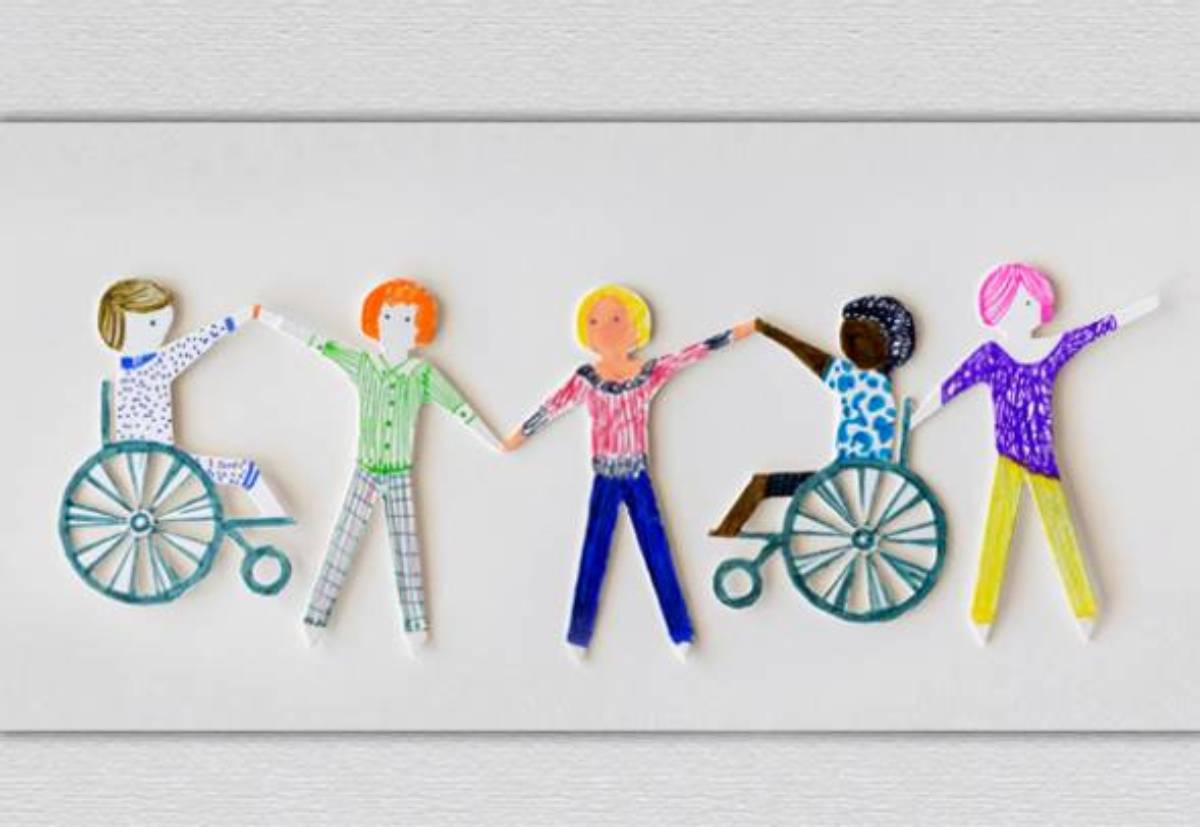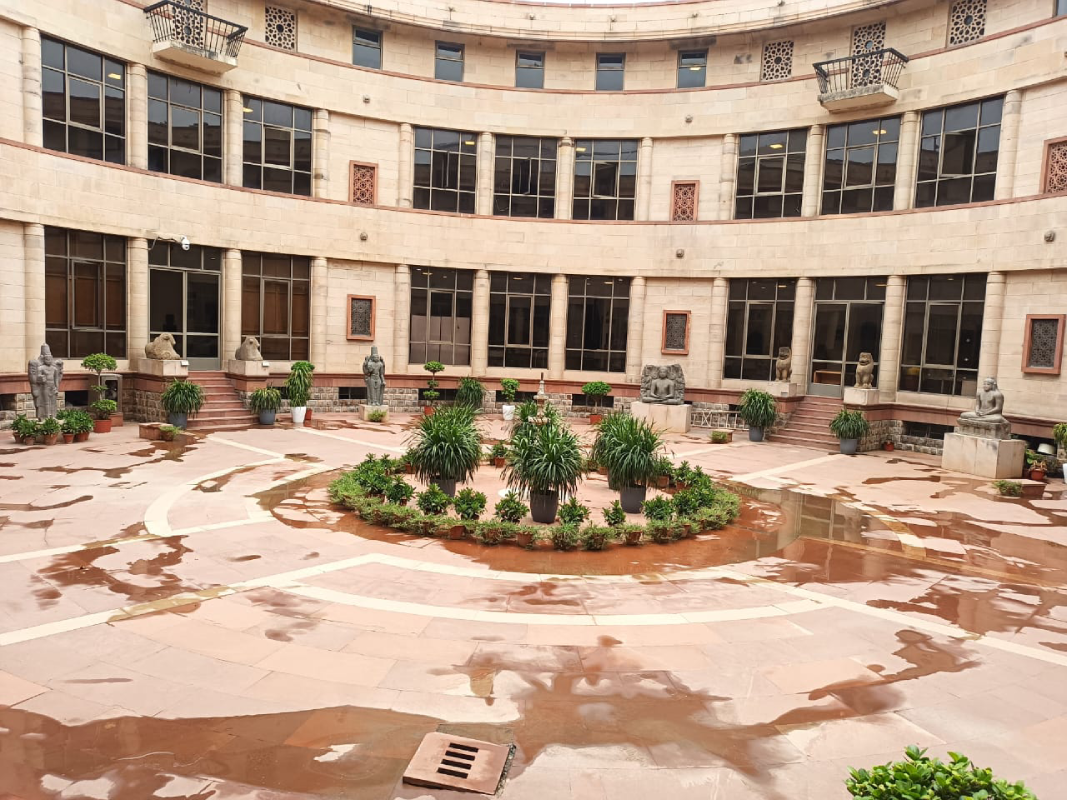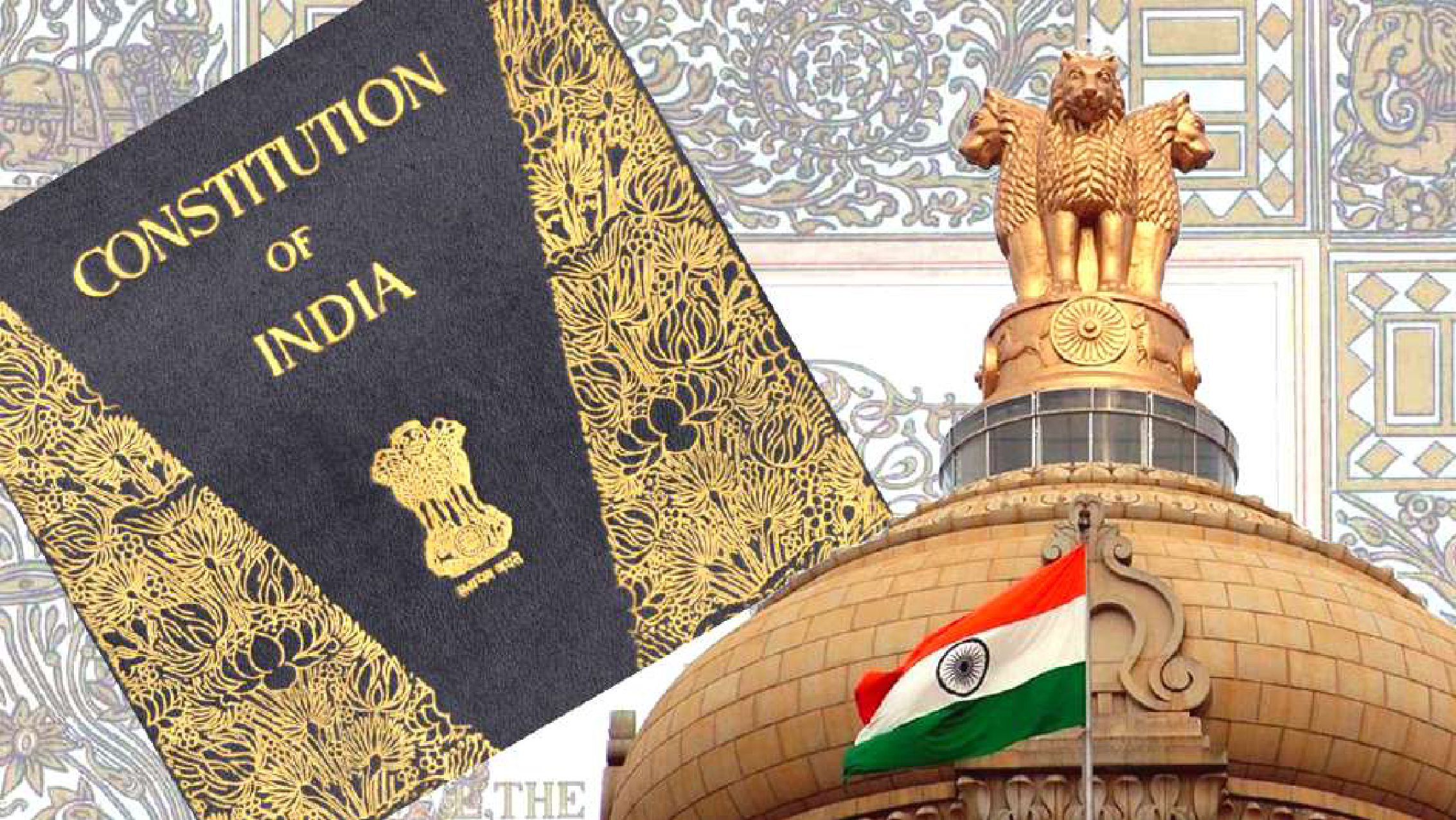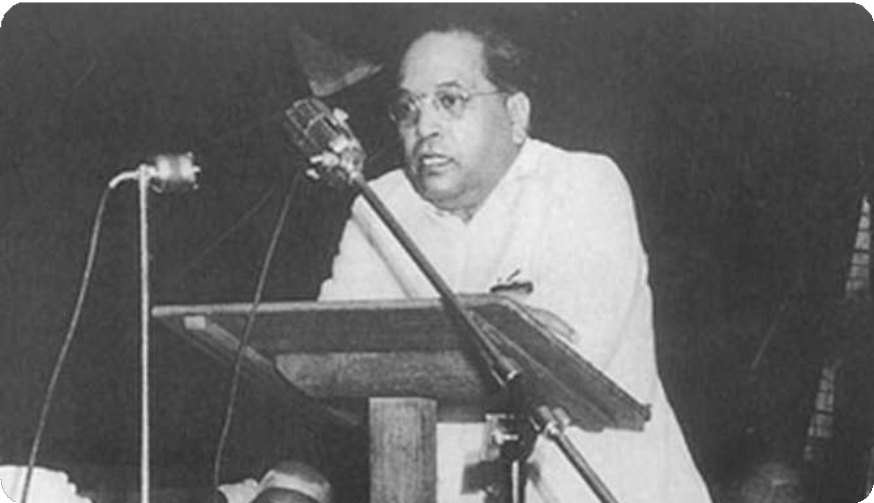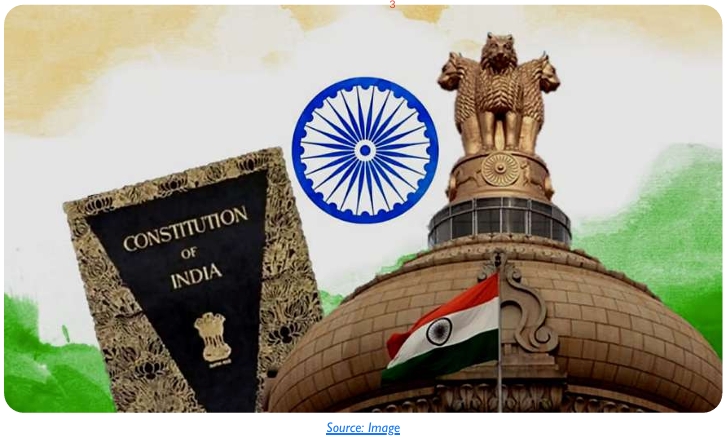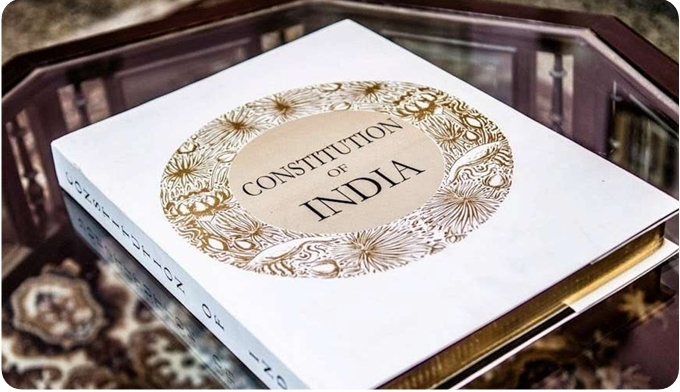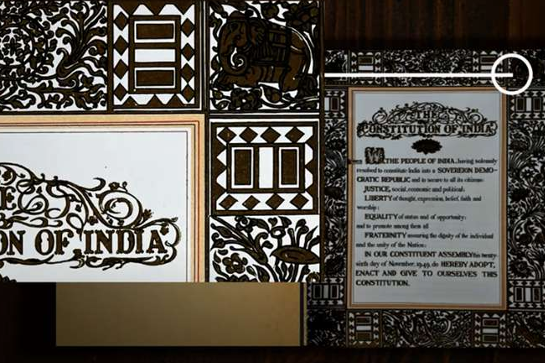Introduction
India signed and subsequently ratified the UN Convention on Rights of People with Disabilities (UNCRPD) in 2007185. The UNCRPD proclaims that disability results from the interaction of impairments with social attitudes which leads to barriers in full and active participation of PWDs in society on an equal basis186. The convention also mandates the signatories to change their national laws in compliance of the principles of the UNCRPD187. In this regard, the Indian Government began the process of enacting a new law replacing the Persons with Disabilities Act, 1995 to make it compliant with UNCRPD in 2010.
After many rounds of consultation the Rights of PWD Act (RPWD Act, 2016) was passed by both the houses of the Parliament in 2016. It was notified on December 28, 2016 after receiving Presidential assent and finally came into force on 19th April 2017188. The 2016 Act reflects a paradigm shift in viewing disability from the perspective of charity to a human rights perspective. The main objective of the 2016 Act is to enable empowerment of persons with disabilities (PWD) through respect for inherent dignity and individual autonomy of PWDs. It emphasizes nondiscrimination, full and effective participation and inclusion in society, respect for difference and acceptance of disabilities as part of human diversity, equality of opportunity, accessibility, equality between men and women, respect for the evolving capacities of children with disabilities, and respect for the right of children with disabilities to preserve their identities189.
The Act has defined disability based on an evolving and dynamic concept. The types of disabilities has been increased from 7 to 21 and includes mental illness, autism, spectrum disorder, cerebral palsy, muscular dystrophy, chronic neurological conditions, speech and language disability, thalassemia, hemophilia, sickle cell disease and Parkinson’s disease which were largely ignored in earlier act190. This Act is supposed to be a game-changer, however, 4 years since it largely remains on paper with its implementation varying across states. The purpose of this paper is to review the 2016 Act and discuss some of the key issues in its implementation. The 2011 census in India revealed that over 26.8 million people suffered from some kind of disability191. This was equivalent to 2.21 percent of the population. Among the total disabled in the country at the time, 14.9 million were males and 11.8 million were females192. Further, 18.6 million PWDs resided in rural areas while 8.2 million reside in urban areas193. Considering the high numbers and the demands from civil society, by 2012, the 49
Union Government of India came up with a disability Bill. After some amendments to the original draft the Bill was tabled in the parliament the very next year. After a wait of over three years, the Rights of Persons with Disabilities Bill was finally passed by both houses of parliament in 2016194.
Disability status was not canvassed in India’s census from 1941 to 1971195. Thus, PWDs were excluded from the population census until the 1980s. After a long absence, the 1981 census included information on three types of disabilities196. However, again in the 1991 census it was left out. This resulted in a growing demand by PWDs for their inclusion in the population census of India. After a prolonged advocacy, a question on disability was finally included in the 2001 census questionnaire. With minimal awareness and training, the enumerators found that 2.1 percent of the total population of the country consists of PWD197. However, persons belonging to many disabilities, including persons with mental and intellectual disabilities, were completely excluded. Census 2001 only included 5 types of disabilities198 Given that the RPWD Act 2016 has enumerated 21 types disabilities it is imperative to further update the methodology in order to get a more accurate data on PWDs as soon as possible.
Salient Features of the RPWD Act 2016
The Rights of Persons with Disabilities Act 2016 was enacted to codify India’s obligations under the UN Convention on the Rights of Persons with Disabilities (UNCRPD). The Ministry of Social Justice and Empowerment set up a committee in 2009 to draft this Bill, which in accordance of the UNCRPD, included people with different types of disabilities. After a series of consultations the committee came up with a Bill in 2012 which was tabled in the parliament in 2013. That Bill lapsed in 2014. A new Bill was introduced by the NDA Government and finally passed in 2016 and received the assent of the President on December 27, 2016.
This Act for the first time truly represented a rights based disability legislation in India. Its focus was on transforming the meaning of disability by expanding its definition from the existing medical framework to a social one. The preamble of this Act states that it aims to uphold the dignity of every Person with a Disability (PwD) in society and prevent any form of discrimination. It also facilitates full acceptance of people with disability and ensures full participation and inclusion of such persons in society.
The Act defines a PwD as any person with long-term physical, mental, intellectual, or sensory impairments which on interacting with barriers hinder effective and equal growth in the society. Further, it also defines a “Person with Benchmark Disability” as a person with not <40% of the specified disability, thereby viewing disability in terms of a dynamic concept. The act contains 17 chapters with 102 sections.
-
Rights and Entitlements of Persons with Disabilities199
- Persons with disabilities shall not be discriminated on grounds of their disability unless it is shown that the specific act is appropriate to achieve a legitimate aim. Persons with disabilities shall have the right to equality, personal liberty and to live in a community. They will not be obliged to live in any specific arrangement and shall have access to residential services and community support.
- The Election Commission (Centre and state) has to ensure that polling stations and all electoral materials are accessible to persons with disabilities. Central and state governments have to ensure that all public documents are in accessible formats.
- The Disaster Management Authority (Centre and state) will take necessary steps to include disabled persons in its disaster management activities for their safety and protection.
2. Special provisions for persons with benchmark disabilities200
- Education: Children between the ages of six to 18 years, with a benchmark disability, have the right to free education in a neighbourhood school or special school if required. All government and government aided institutions of higher education are required to reserve at least five per cent of seats for persons with benchmark disabilities. For admission in higher education institutions, they will be allowed relaxation in the upper age limit, by five years.
- Employment: Five per cent of government owned or controlled establishments shall be reserved for persons with benchmark disabilities. One per cent of this must be reserved for persons with (i) blindness and low vision; (ii) hearing and speech impairment; (iii) locomotor disability; (iv) autism, intellectual disability and mental illness; (v) multiple disabilities. The government may exempt any establishment from this provision.
- The central, state and local governments shall provide incentives to the private sector to ensure that at least five per cent of their work force is composed of persons with benchmark disability.
- Five per cent reservation to be provided for persons with benchmark disabilities in (i) allotment of agricultural land and housing in all relevant schemes and programmes; (ii) poverty alleviation schemes (with priority to women with benchmark disabilities); and (iii) allotment of land on concessional rate for purposes of business, enterprise, etc.
3. Guardianship of PWDs201
- If a district court determines that a PWD is unable to take care of himself or of taking legally binding decisions, it may assign limited guardianship for such a person. A limited guardian will take joint decisions with the PWD.
- In extraordinary situations, where limited guardianship cannot be awarded, the district court can award plenary guardianship where the guardian takes legally binding decisions for the PWD. The guardian need not consult with, or determine the will or preference of the PWD.
4. Authorities established under the Bill202
- Chief and State Commissioners for Persons with Disabilities: The central government shall appoint a Chief Commissioner, and state governments shall appoint State Commissioners for PWDs. The Commissions will be required to: (i) identify any laws, policies or programmes that are inconsistent with the Act; (ii) inquire into matters relating to deprivation of rights and safeguards available to disabled persons and recommend appropriate remedial measures; (iii) monitor implementation of the Act and utilization of funds disbursed by governments for the benefit of disabled persons, etc.
- Central and State Advisory Boards on Disability: The central government shall constitute a Central Advisory Board, and state governments shall constitute a State Advisory Board each, for disability matters. State governments shall also constitute District-Level Committees. The functions of these advisory boards will include: (i) advising the government on policies and programmes with respect to disability; (ii) developing a national/state policy concerning persons with disabilities; (iii) recommending steps to ensure accessibility, reasonable accommodation, non-discrimination, etc.
Key Issues
- Slow Progress in Implementation: A study203 was conducted by Disability Rights India Foundation (DRIF) in 2018, across 24 States, to evaluate the progress of implementation of RPWD Act. The study highlighted poor compliance even after 2 years of enactment. Some key findings (as of December 2018):
- More than half the states (14 out of 24) had not notified the State Rules, in spite of the Act mandating notification within six months of the enactment.
- 12 states had not constituted State Advisory Boards (SAB) and 20 had not constituted District Committees.
- 9 States had not appointed the required Commissioners for Persons with Disabilities and only 3 States had constituted Advisory Committees to assist the State Commissioners.
- 19 States had not constituted the mandated State Fund for implementing the Act.
- Only 4 States had appointed a Nodal Officer in the District Education Office to deal with admission of children with disabilities.
- 14 States had not notified the mandated Special Courts for the purpose of trying offences under the Act and 20 had not appointed Special Public Prosecutors
- As per the Act, every establishment (private and government) is required to formulate an Equal Opportunity (EO) Policy and register it with the Commissioner. However, 22 States had not received any EO policy from the Government.
- 13 states had not issued the notifications for increasing reservation in employment from 3% to 4%
- Only one State had taken action with regard to providing increased assistance in social security schemes for people with disabilities
- Only 12 States had started issuing disability certificates pertaining to the new disabilities that had been included in the Act.
- Under-estimation of Numbers: As per 2011 census, people with disability form 2.21% of the population. However, according to experts this is an underestimation204. The WHO estimates that worldwide the number of people with disabilities is 10 to 15 per cent of the total world population205. Compared to other countries, especially the developed ones, the percentage of disabled persons in India is much lower206. This does not mean India has succeeded in tackling disability by medical advancement. The problem lies in faulty data collection and insistence on requirement of higher degree of disability207.
3. Lack of Coordination between Departments: Since creating an inclusive ecosystem for people with disability is a cross policy issue it requires coordination between various departments and ministries. However, in practice there is little coordination between the Department of empowerment for People with Disabilities DePwD and other ministries208. This has excluded the concerns of persons with disabilities from policies especially in the context of disaster management, motor vehicles, right to information, etc.
4. No Penalty for Violation of Access to Public Services: The Act mandates that all public services shall be accessible; however, no penalty has ensued for its violation209. Consequently, there is little progress in ensuring a more inclusive ecosystem to avail services. The dismal state of roads, public transport and infrastructure make it inaccessible for persons with disabilities. There is little compliance between the National Building Code and the harmonised guidelines. Guidelines for accessible websites are also not made explicitly applicable to private websites.
5. Problems with Issue of UDID Cards: The Unique Disability ID (UDID) has been implemented with a view to create a National Database for PwDs However, the progress is extremely slow210. Many differently able people have not applied due to lack of awareness. Several people who have applied have complained about long waits. And even those that have received the cards have noticed many errors. The application for corrections is also a long and cumbersome process. Additionally, since UDID cards are only given to persons with benchmark disabilities, it is suggested that the data will be under representative. For instance members of the Multiple Sclerosis Society of India have stated that since Remitting Relapse Multiple Sclerosis does not fit the 40% benchmark, such individuals are neither provided disability certificate nor are they recorded in official data211.
6. Underutilization of National Fund: Section 86 of the RPWD Act provides for a National Fund for persons with disabilities and the previous fund under the1995 Act has been merged with it. The fund is used for various activities including scholarship support for students with disabilities. In between 2009-15 Rs 3.51 crore was disbursed to support more than 50 lakh students every year212. However, since then the fund had been frozen for four years, and as of July 2019 more than 260 crore of the fund remained unutilized. Also, the DGCAE through an RTI reply has stated that it has not conducted any audit of the fund213.
7. Challenges for Inclusive Education: Current data indicates that an estimated 7.8 million children below 19 live with disabilities. Amongst them, 75% of the population below 5 does not go to any educational institution, and for CWDs between 5 and 19 the figure is at 25%214. Further, the proportion of CWDs who are out of school is much higher than the overall proportion of out-of-school children. Thus, in spite of schemes aimed at bringing CWDs into schools, many gaps remain215. There continues to be a lack of accessible physical infrastructure, assistive technologies and information and communication technology. Governance-related challenges such as lack of effective coordination between different stakeholders, inadequate allocations, delays and underutilization of funds remain.
While all three types (neighbourhood school, special school and home-based school) of schooling are legally endorsed for CWDs, there is absence of a legal framework specifying standards that is applicable across all three categories. There is also absence of a coordinating authority that can enforce norms and standards across multiple educational settings. The New Education Policy unveiled in 2019 also does little for the interest of CWDs216. It lacks provisions for intervention in early childhood care and education (ECCE). It does not have any provision for special educators and teachers training. It also proposes creation of school complexes which would further hinder access.
8. Lack of Awareness: In Indian society there are still preconceived notions of disability and its association with religious faith217. People still consider disability as a direct result of misdeeds of previous life. Additionally, the society is steeped in referring to PWDs by their disability. As a result they continue to suffer social stigma and discrimination. Thus, awareness about PWDs is one of the most important issues that need to be addressed.
Recommendations
- Administrative Mechanisms and plans should be put in place by the Nodal Ministry and other relevant Ministries at the earliest. There are very specific mandates and timelines given in the Act. It is necessary to ensure accountability of stakeholders to prevent any further delay in implementation.
- Awareness should be raised, and capacities should be built among various personnel who have a role to play in implementing the Act. The Rehabilitation Council of India (RCI) and relevant training bodies should devise a plan for ensuring that disability issues are included in the curriculum.
- Social Audits should be undertaken periodically as mandated by the Act to help in monitoring progress and improving various schemes.
- There is a need to ensure accurate and reliable data on PWDs through Census 2021.
- Need convergence and streamlining of all relevant departments on the issue of RPWDs to enable policies for an inclusive ecosystem.
- Need to implement penalties for any violation of access to public services to disincentivize non-compliance.
- UDID cards need to be issued at the earliest and the process of applying for any corrections needs to be simplified. There is also a need for further consultations with representatives of various disability organizations to ensure benchmarking does not lead to any under estimation.
- Adequate resources should be allocated and disability budgeting should be introduced in relevant departments. Proper utilization of funds needs to be ensured.
- Need to provide a legal framework of standards which is aimed at meeting needs of CWDs and which is applicable across all three categories of schooling. Also need to provide a coordinating authority to enforce the standards.
- Need a dedicated fund to ensure inclusive physical infrastructure and assistive technologies are made available as soon as possible. All effort needs to be made to make educational institutions more accessible.
- The new education policy needs to be revised after consultations with groups representing CWDs to ensure their interests are incorporated.
- Need comprehensive awareness campaigns amongst PWDs as well as the larger society to sensitize population about rights of PWDs especially in rural areas.
References
- Disabled Persons in India: A Statistical Profile, 2016 Report, MoSPI, GoI.
- DRIF, December 2018. Two Years of The Rights of Persons with Disabilities (RPWD) Act 2016 – Status of implementation in the States and UTs of India. New Delhi.
- Elston, Philips, “THE E.U. AND HUMAN RIGHTS, 1999, Oxford Publication.
- Express Web Desk. July 29, 2019. ‘Rs 260.62 crore national disability fund lying unused, reveals RTI,’ Indian Express. New Delhi.
- Hashim, Muhammed. December 3, 2019. ‘India more disabled-friendly but yet to be fully inclusive,’ The New Indian Express. Kerala.
- Hosamane, Sakshi Broota. 2007. “Developing the Gender Dimension in India in Disability Rights Movement”.
- Kokare, Kailas. March 22, 2019. ‘Rural India still insensitive to persons with disabilities,’ Village Square. Pune.
- Lawson, Edward, “ENCYCLOPAEDIA OF HUMAN RIGHTS”, 1996.
- Lindqvist, Bengt, “Standard rules in the disability field – a United Nations instrument, Human Rights and Differently-abled Persons, Degener and Koster-Dreese”, eds., Dordrecht, Kluwer Academic Publishers Group, 1995.
- Mental Healthcare Act, 2017, GoI.55
- Miles, M. 2002. “Community and Individual Responses to Disablement in South Asian Histories: Old Traditions, New Myths?”, Asia Pacific Disability Rehabilitation Journal.
- National Policy on Disability, 2006, GoI.
- Persons with Disabilities (Equal Opportunities, Protection of Rights and Full Participation) Act, 1995, GoI.
- PTI. May 30, 2017. ‘Disabled persons data of 2011 may be underestimated; actual number more higher,’ Hindustan Times. Hyderabad.
- Quinn, G., and Degener, T., “Human rights and disability: The current use and future potential of United Nations human rights instruments in the context of disability”, Geneva, Office of the High Commission for Human Rights, 2002.
- S.K. Verma, “International legal regime on the rights of persons with disability: it’s relevance to national legal system” in S. K. Verma (Ed.) RIGHTS OF PERSONS WITH DISABILITIES, 2002.
- Statesman News Service. July 23, 2019. ‘Differently abled unaware of UDID cards,’ The Statesman. Bhubaneswar.
- State of Education Report for India 2019: Children with Disabilities, 2019, Tata Institute of Social Sciences, Mumbai.
- The Declaration on the Right to Development, 1986, UN.
- The Mental Health Act, 1987, GoI.
- The National Thrust for Welfare of Persons with Autism, Cerebral Palsy, Mental Retardation and Multiple Disabilities Act, 1999, GoI.
- The Rehabilitation Council of India Act, 1992, GoI.
- The Rights of Persons with Disabilities Act, 2016, GoI.
- TPT Bureau. January 21, 2020. ‘Cross-Disability rights organizations demand stringent implementation of RPWD Act 2016,’ The Policy Times.
- United Nations Convention for the Rights of People with Disabilities, 2006, UN.
Footnotes:
185 https://pib.gov.in/Pressreleaseshare.aspx?PRID=1584572
186 https://www.un.org/disabilities/documents/convention/convention_accessible_pdf.pdf
187, 189, 190, 192, 193 Ibid
188 The Rights of Persons with Disabilities Act, 2016, Gazette of India, 28 December. 2016.
191 http://mospi.nic.in/sites/default/files/publication_reports/Disabled_persons_in_India_2016.pdf
194 The Rights of Persons with Disabilities Act, 2016, Gazette of India, 28 December. 2016.
195 Disabled Persons in India: A Statistical Profile, 2016 Report, MoSPI, GoI
196, 198 Ibid
197 Census of India 2001.
199 RPWD Act 2016, Chapter II. 50
200 RPWD Act 2016, Chapter VI.
201 RPWD Act 2016, Article 14.
202 RPWD Act 2016, Chapter XI, Chapter XII.
203 DRIF, December 2018. Two Years of The Rights of Persons with Disabilities (RPWD) Act 2016 – Status of implementation in the States and UTs of India. New Delhi.
204 https://www.newindianexpress.com/states/kerala/2019/dec/03/india-more-disabled-friendly-but-yet-to-be-fully-inclusive-2070469.html
205 https://www.hindustantimes.com/india-news/disabled-persons-data-of-2011-may-be-underestimated-actual-number-more-higher-official/story-oByDrUwC5YsbktJRpD6nxL.html
206 https://www.newindianexpress.com/states/kerala/2019/dec/03/india-more-disabled-friendly-but-yet-to-be-fully-inclusive-2070469.html
207, 209, 213 ibid
208 https://thepolicytimes.com/cross-disability-rights-organizations-demand-stringent-implementation-of-rpwd-act-2016/
210 https://www.thestatesman.com/cities/bhubaneshwar/differently-abled-unaware-udid-cards-1502781401.html
211 https://thepolicytimes.com/cross-disability-rights-organizations-demand-stringent-implementation-of-rpwd-act-2016/
212 https://indianexpress.com/article/india/rs-260-62-crore-national-disability-fund-lying-unused-reveals-rti-5860598/
214 https://counterview.org/2019/07/08/children-with-disabilities-indias-partial-progress-in-harmonizing-national-laws-with-un-requirements/
215 ibid
216 https://thepolicytimes.com/cross-disability-rights-organizations-demand-stringent-implementation-of-rpwd-act-2016/
217 https://www.villagesquare.in/2019/03/22/rural-india-still-insensitive-to-persons-with-disabilities/
